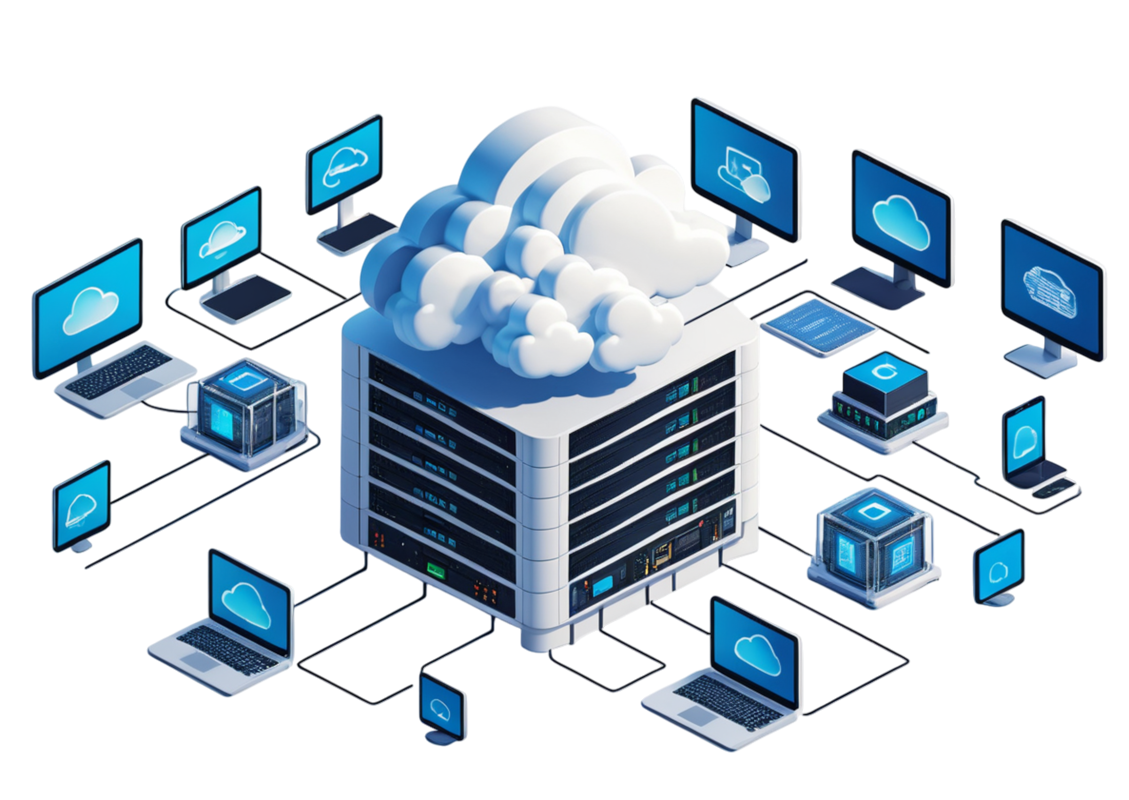

THE AUTHOR
Nishanth Gotte
Lead Consultant - Cloud
Cloud computing has so far reshaped businesses, however, the effect of this transformation is nowhere near completion. It has evolved from a remote data storage provision into a core element of today’s digital business powering everything from software development environments to machine learning to hardware control via the Internet of Things (IoT).
The rise of the cloud-based subscription model for businesses has recently blown up due to the phenomenal reach of cloud computing. These subscription models can be used for a multitude of digital or software-controlled hardware capabilities ranging from platforms, infrastructure, data storage and much more.
Today, the cloud is essential across diverse industries as businesses increasingly rely on ‘on-demand’ IT, be it accounting software or full-blown PaaS, IaaS, as well as SaaS solutions. Here are some stats to explain the current scenario of cloud based solutions :
- Businesses leverage the cloud to deal with almost 94 percent of all their workloads. Out of it, 75 percent is SaaS.
- By the end of this year, the worldwide cloud market will touch the $623.3 billion mark, and by the year 2025, that figure will shoot up to a whopping $832 billion mark or more.
- The end-user expenditure on Cloud Managed Services would be approximately $397.5 billion.
- AWS is still the largest cloud computing provider globally, contributing to 31 percent of the market.
- North America contributes to 61 percent of the global cloud market.
- Companies are to deploy 95 percent of total new workloads by 2022 end.
In navigating this complex and rapidly evolving landscape, businesses can benefit from cloud consulting services to optimize their cloud strategies, ensuring seamless integration and maximum value from cloud based solutions.
Here are the top 5 ways cloud computing could reshape the IT sector in 2022:
Fog Computing/Edge Computing
Fog computing or Edge computing is a new cloud paradigm where the core Cloud Managed Services are positioned closer to the edge of the network near consumers of the service. This is a change from the traditional way of cloud processors or storage units lying in a centralized data center and users accessing information on a need basis.
Each Edge server comes with individual computing, networking, as well as storage abilities so that every device includes functions for network switching & routing, security, and load balancing.
Edge Computing is crucial in 2022 and is not an alternative to cloud, but Edge and cloud go with each other for increased efficiency, the synthesis is now an increasing trend. Leveraging both technologies does enable IT environments with cloud benefits but also ensures:
- Zero or little latency concerning response times
- Data processing that is near instant
- Reduced quantity of transmitted data.
- Less bandwidth utilization.
Fog computing promises greater accuracy and faster retrieval of information, especially for users connected by low latency networks. Cloud managed services play a pivotal role in optimizing the deployment and management of fog computing resources, ensuring seamless integration with broader cloud infrastructures. This allows for a better quality of service and facilitates better analytics of information or data sources. Fog computing would also ideally give more power to IoT-enabled ecosystems wherein huge processing power is needed to compute information from the sensors that are transmitting data. If the processing system is closer to the ecosystem, then better insights and control signals can be processed faster leading to better productivity and better service.
Businesses can also witness a boost in Secure Access Service Edge or SASE because 40 percent of organizations will expect to include SASE in their toolchains. Now, this security architecture helps a business deal with and handle access to on-prem infrastructure, cloud applications, as well as end-user devices.
Artificial Intelligence as a Service
More AI/ML adoptions are evident in 2022 and beyond. Consequently, the experts in the industry expect that the market for AI will soar to a whopping $850 billion by the year 2028.
All AI and ML platforms need high processing power as well as data bandwidth – these capabilities are significantly more cost-effective via cloud tech. Artificial intelligence helps the cloud deal with data as well as gain useful insights when it comes to trends, user behavior, preferences, and dislikes.
Consumers want AI in everything from sorting their music playlists to creating tailored shopping lists to automated bill payments and much more. AI and machine learning is no longer an asset that is monopolized by major tech players like Google, Facebook, Microsoft, IBM, etc. Today, these companies offer AI capabilities on the cloud as subscriptions to small businesses so that anyone can use AI to streamline their operations and create better experiences for their users. For example, video streaming companies can use Amazon AI-powered intelligent video analytics capabilities to provide richer assistive content to users.
Enterprises can utilize Google’s text and speech analytics AI engines to offer better and automated CRM interactions for their end users. The possibilities are limitless and thanks to a subscription model, businesses do not have to invest in forming large AI teams or supporting infrastructure.
End-to-End management of digital assets
With many businesses undergoing digital transformation, more key business processes rely on information systems running on the cloud for processing. An end-to-end Digital Asset Management system makes it possible for key company decision makers to run the company virtually anywhere on the planet. A centralized dashboard could be used to interact with multiple cloud-based systems powering individual business processes. This leads to holistic management of organizational data with transparency and flexibility, facilitated by efficient cloud consulting services.
Autonomous Cloud Security
2017 witnessed the Equifax data breach which was perhaps the most alarming cyber security breach over the past decade. Credit and financial reports of over 143 million US citizens were illegally accessed by hackers. Today, almost all corporate and consumer data resides on the cloud and hence it is vital that information systems that handle your data ensure its integrity and security. The solution lies in autonomous security measures wherein manual human intervention is avoided or reduced to a bare minimum.
Further, based on a Cloud Security Report by Check Point, 27 percent of companies faced a security threat in their public cloud infrastructure in 2022. Out of these, 23 percent of incidents occurred due to security misconfigurations in cloud infrastructure, 15 percent due to inaccurate data sharing and compromised accounts, and 14 percent because of vulnerability exploitation.
Automation of security audits, protocol, and policy implementation became the de-facto standard for cloud security operations in 2018, thereby ensuring the safety of your company’s data.
As your business moves to complex and multi-cloud environments, automation is the need of the hour to ensure security at scale. Companies use security tools to maintain security processes and controls including serverless technologies, SOAR, Continuous Integration and Delivery Plugins, and more.
Multi-cloud environments
For businesses, the problem of having to choose between public, private or hybrid cloud managed services will soon be irrelevant. In 2018, enterprises will begin to have the flexibility to mix and match multiple cloud environments with top cloud computing vendors having realized the need to be interoperable. No one product excels in everything, but each one excels in something. If Amazon AWS is good for development environments, then Microsoft Azure may be the best for storage scalability. Enterprises can avail the best of everything to create the ideal digital core of their business on the cloud. Top cloud players have already formed consortiums and open protocols for interoperability and 2018 will witness these initiatives transform into key benefits for enterprises.
Cloud consulting services play a crucial role in helping enterprises leverage the flexibility of mixing and matching cloud solutions , creating a digital core that aligns with business objectives.
Final Thoughts
The best way for enterprises to use cloud computing for business value is to partner with an established cloud computing service provider like Korcomptenz . With over a decade of expertise in helping organizations with their digital transformation initiatives, Korcomptenz is your destination for leading the next wave of cloud-driven digital business value and market competence. Get in touch with us today for comprehensive cloud managed services!

Focus on you
Share this article
Facebook
LinkedIn
Twitter




